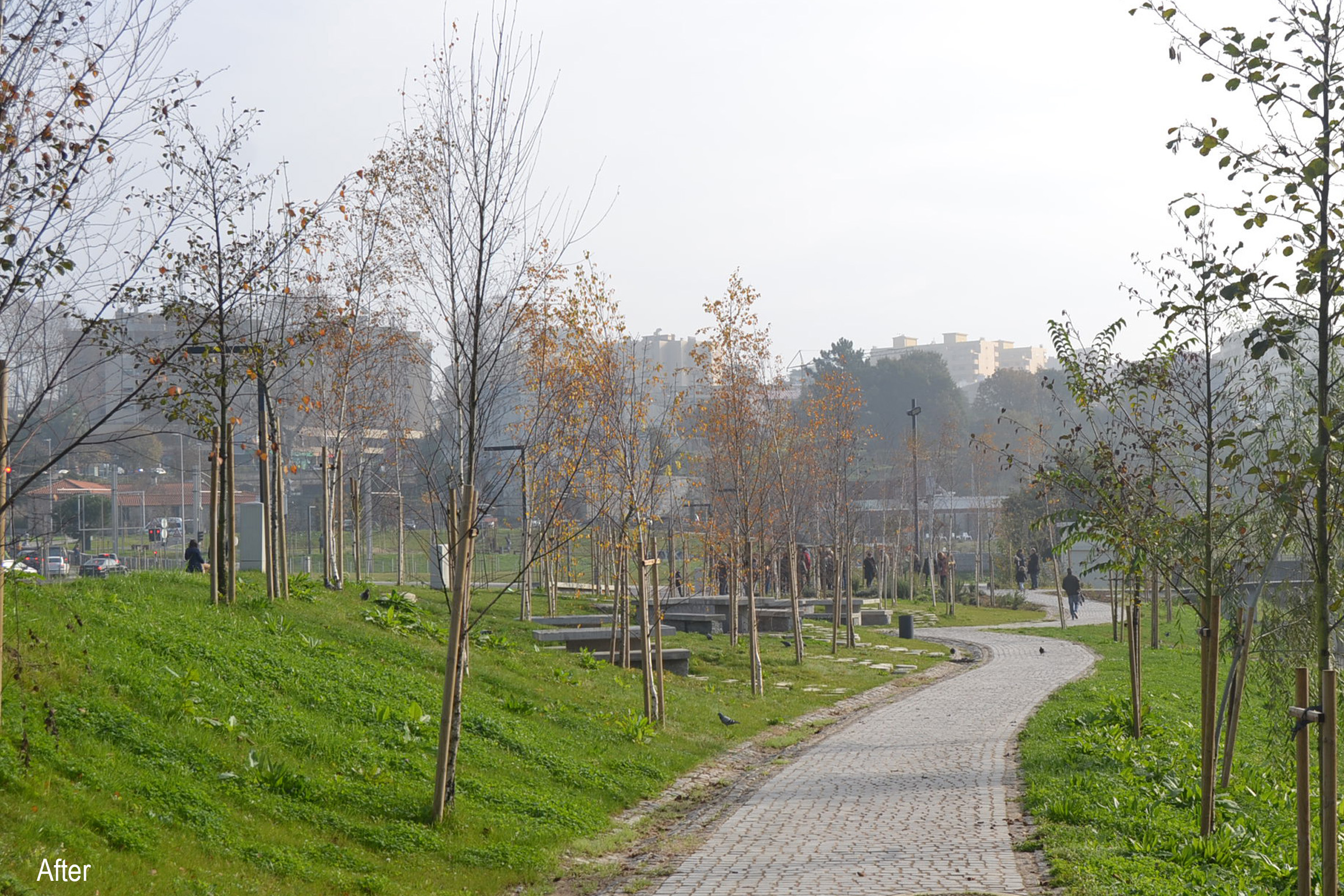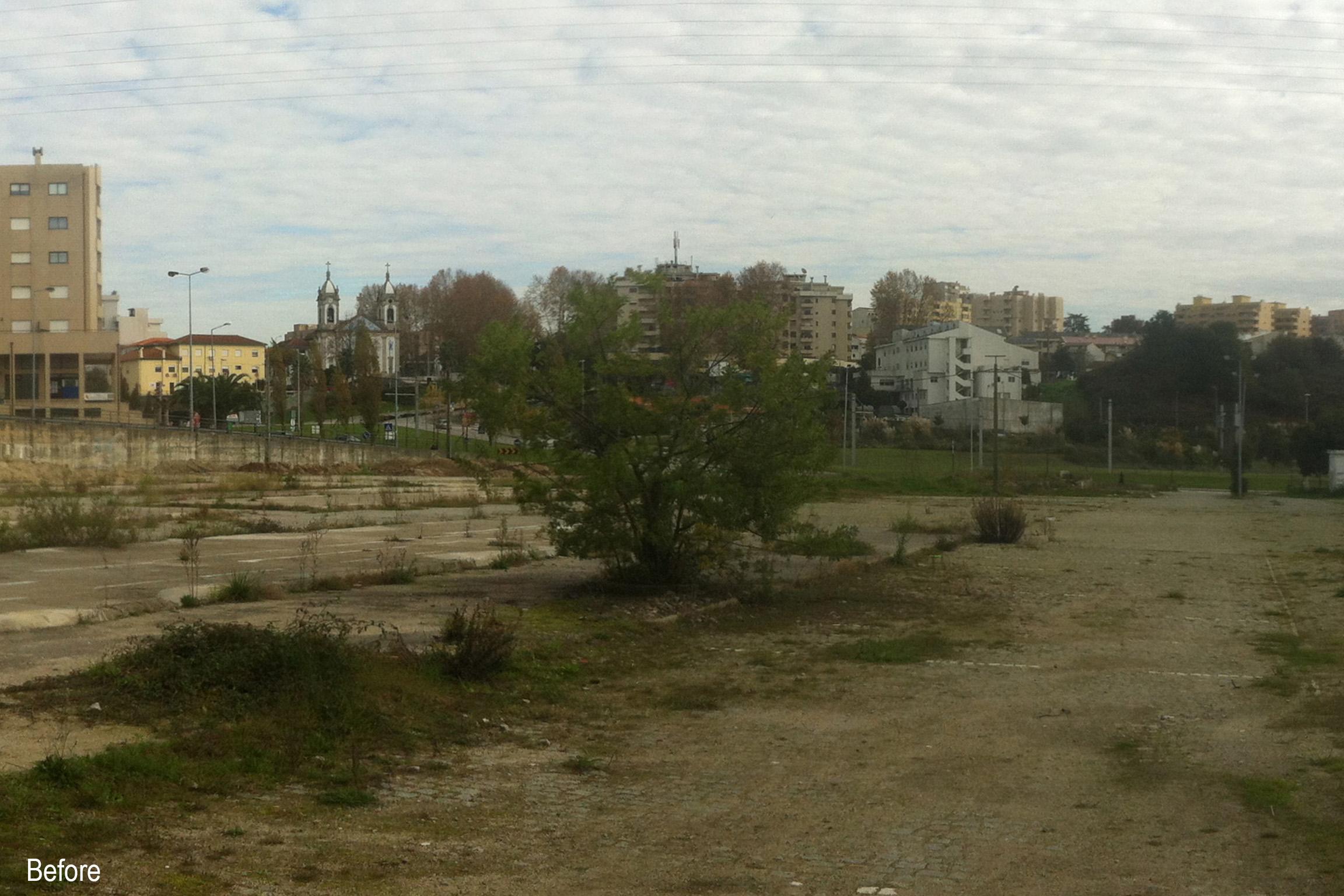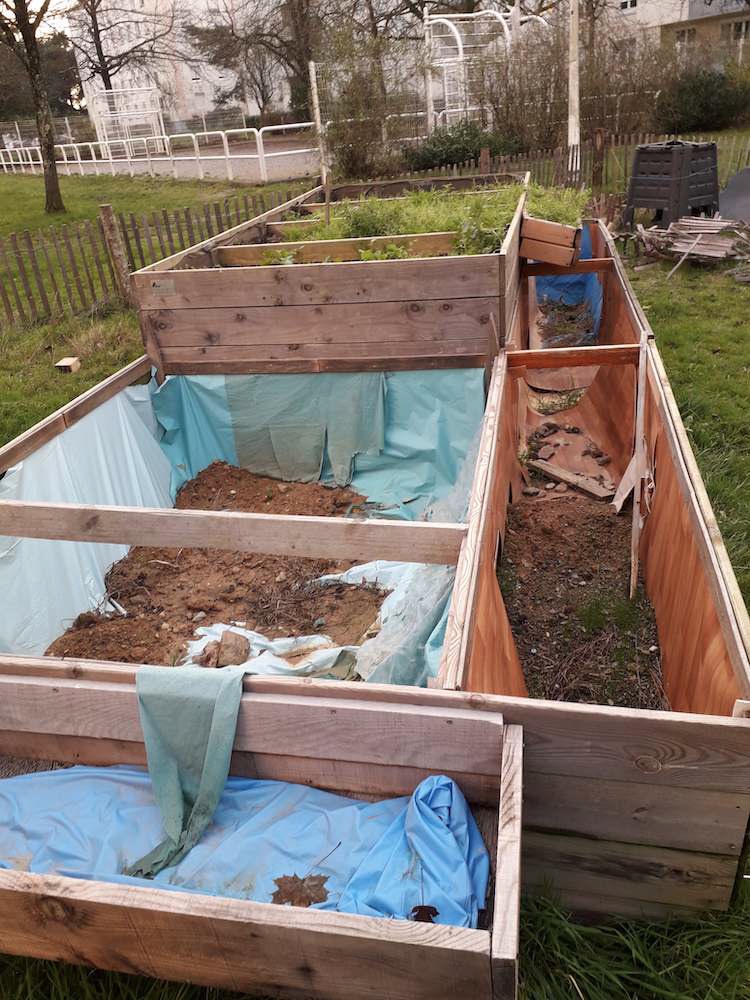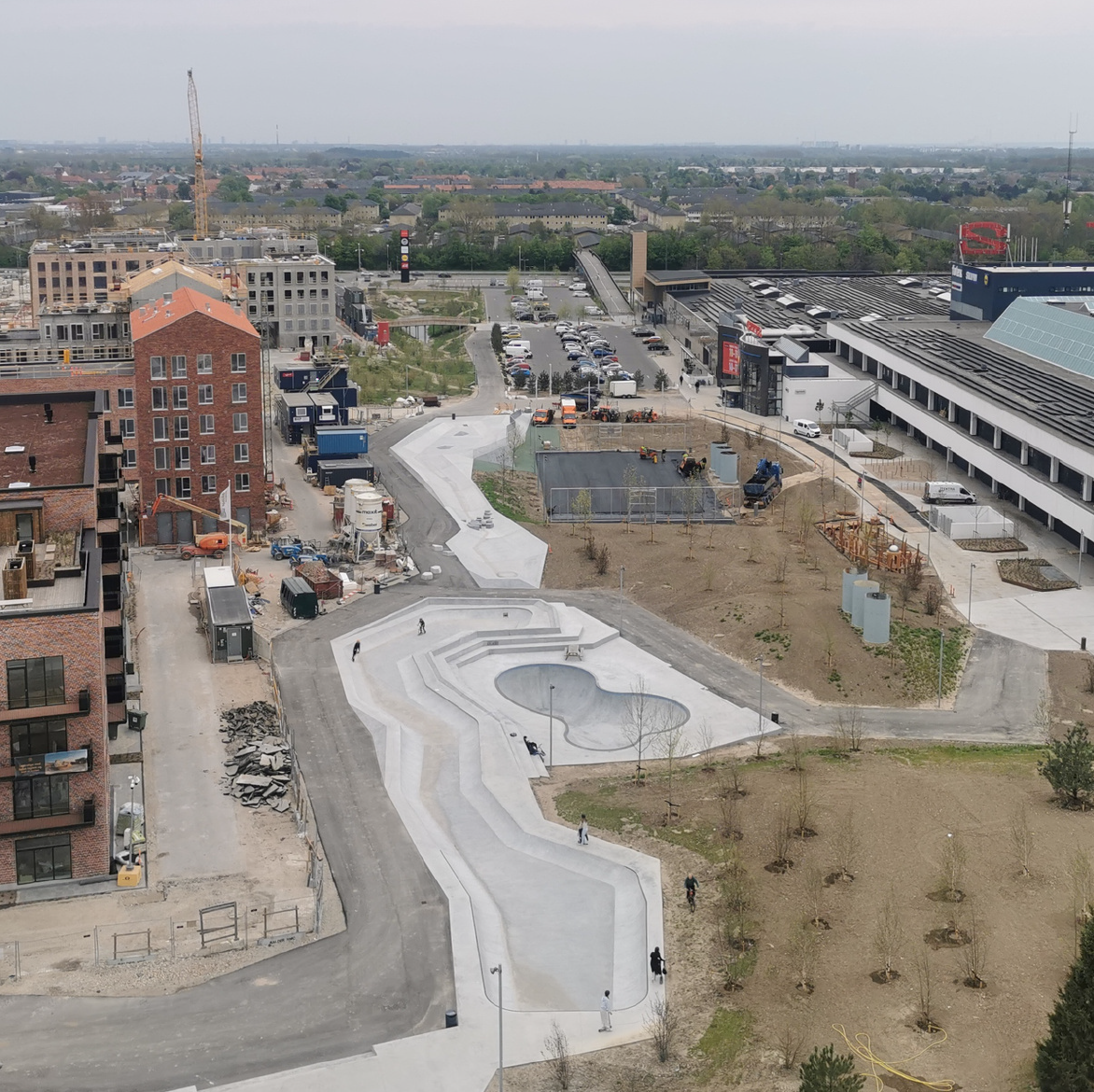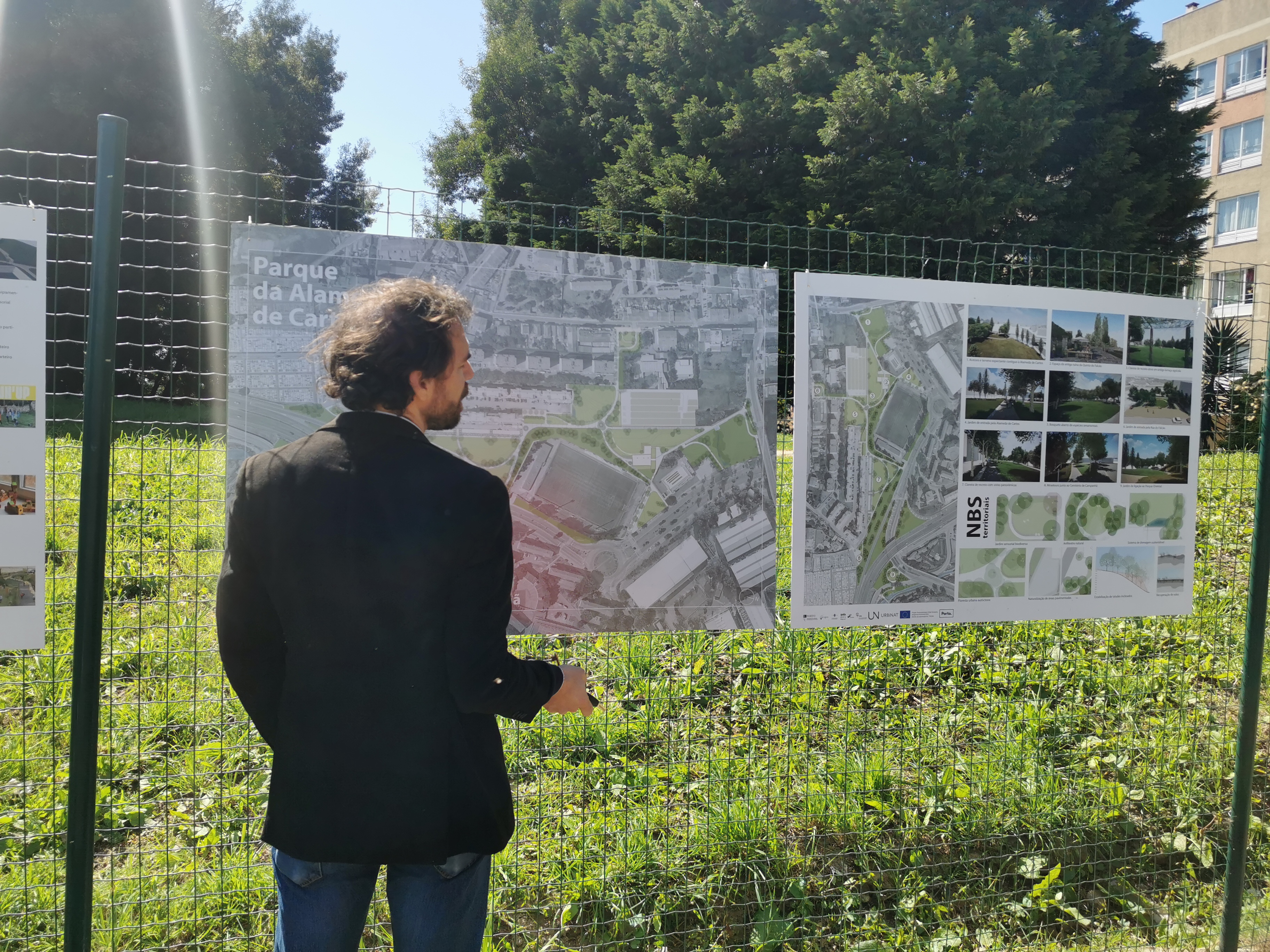Renaturalisation of Brownfields
Challenges Addressed
Score impact
Nature
Wellbeing
Health
Mobility
Participation
Economy
DESCRIPTION
Renaturalization of neglected and abandoned urban areas through green space development and conscious planting design, to restore important ecologic and social functions. In some remarkable sites they can be an important cultural manifesto: an opportunity to promote historical continuity between its past and the new layer of occupation. Promoting its character is an important step for a truthful relation with the site’s cultural identity, creating an opportunity to reflect on the damage inflicted by its previous occupation or, on the other hand, to celebrate the relevance of its past social and technological achievements. By recovering former abandoned spaces, this NBS creates opportunities for human use and wellbeing, while achieving ecological benefits such as treatment of polluted areas, habitat restoration and increase of local biodiversity.
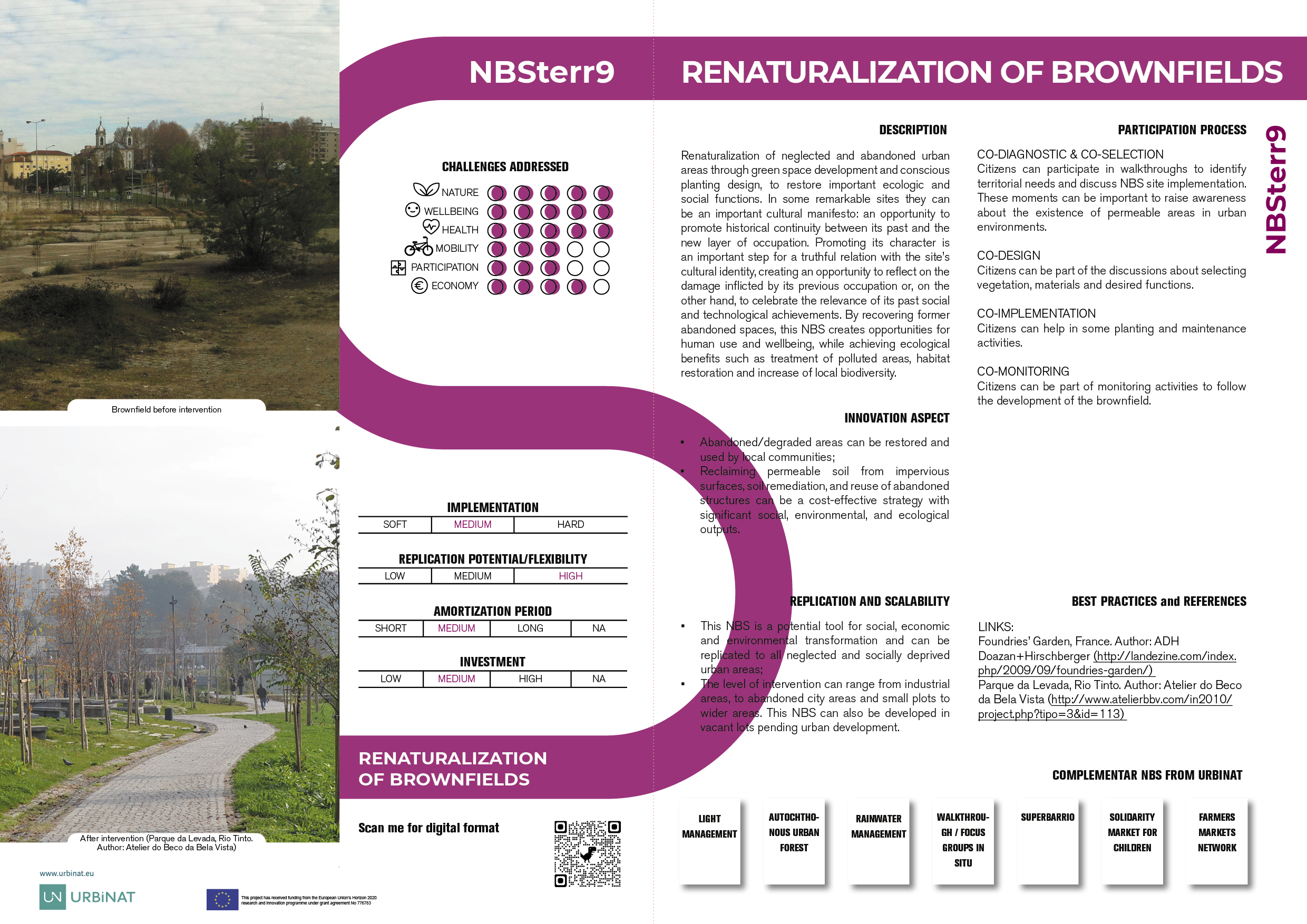
[PDF Download] Renaturalization of Brownfields
Renaturalization of neglected and abandoned urban areas through green space development and conscious planting design, to restore important ecologic and social functions. In some remarkable sites they can be an important cultural manifesto: an opportunity to promote historical continuity between its past and the new layer of occupation. Promoting its character is an important step for a truthful relation with the site’s cultural identity, creating an opportunity to reflect on the damage inflicted by its previous occupation or, on the other hand, to celebrate the relevance of its past social and technological achievements. By recovering former abandoned spaces, this NBS creates opportunities for human use and wellbeing, while achieving ecological benefits such as treatment of polluted areas, habitat restoration and increase of local biodiversity.
INNOVATION ASPECT
- Abandoned/degraded areas can be restored and used by local communities;
- Reclaiming permeable soil from impervious surfaces, soil remediation, and reuse of abandoned structures can be a cost-effective strategy with significant social, environmental, and ecological
REPLICATION AND SCALABILITY
- This NBS is a potential tool for social, economic and environmental transformation and can be replicated to all neglected and socially deprived urban areas;
- The level of intervention can range from industrial areas, to abandoned city areas and small plots to wider areas. This NBS can also be developed in vacant lots pending urban development.
PARTICIPATION PROCESS
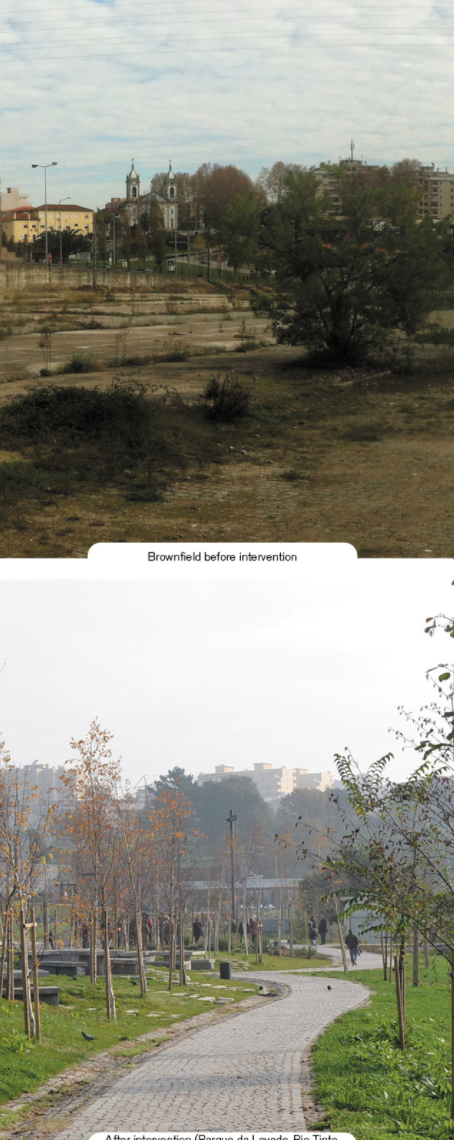
-
1
CO-DIAGNOSTIC & CO-SELECTION
Citizens can participate in walkthroughs to identify territorial needs and discuss NBS site implementation. These moments can be important to raise awareness about the existence of permeable areas in urban environments.
-
2
CO-DESIGN
Citizens can be part of the discussions about selecting vegetation, materials and desired functions.
-
3
CO-IMPLEMENTATION
Citizens can help in some planting and maintenance activities.
-
4
CO-MONITORING
Citizens can be part of monitoring activities to follow the development of the brownfield.
Best Practices & References
LINKS:
Foundries’ Garden, France.
Author: ADH Doazan+Hirschberger
Parque da Levada, Rio Tinto. Author: Atelier do Beco da Bela Vista


